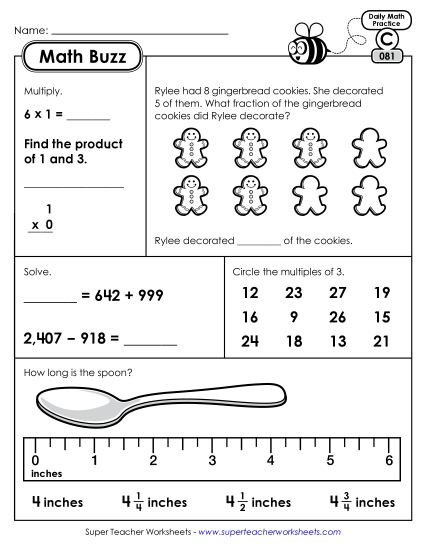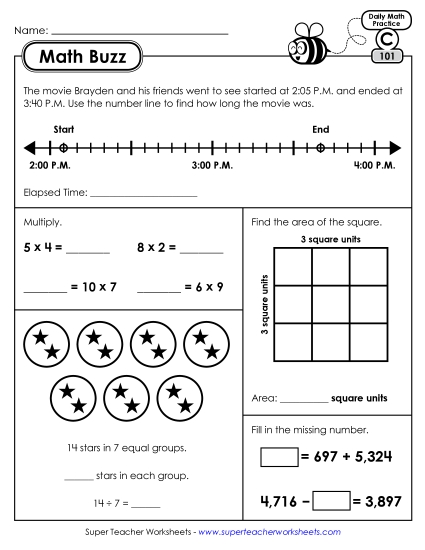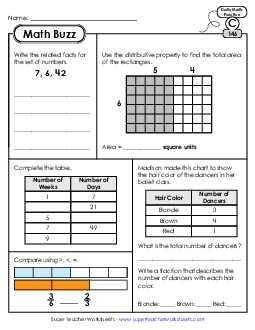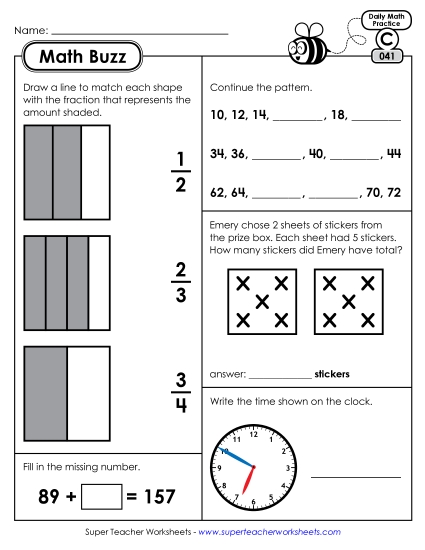STW.3:
Math
General
This set contains daily review math worksheets that cover a variety of 2nd and 3rd grade math standards. Because each problem covers a different math skill, we're unable to list each Common Core Standard included. Below you'll see only a partial list of Common Core Standards covered in this file.
3.NBT.2:
Number And Operations In Base Ten
Use Place Value Understanding And Properties Of Operations To Perform Multi-Digit Arithmetic
Fluently add and subtract within 1000 using strategies and algorithms based on place value, properties of operations, and-or the relationship between addition and subtraction.
3.NF.2:
Number And Operations - Fractions
Develop Understanding Of Fractions As Numbers.
Understand a fraction as a number on the number line; represent fractions on a number line diagram.
3.OA.5:
Operations And Algebraic Thinking
Understand Properties Of Multiplication And The Relationship Between Multiplication And Division.
Apply properties of operations as strategies to multiply and divide.2 Examples: If 6 x 4 = 24 is known, then 4 x 6 = 24 is also known. (Commutative property of multiplication.) 3 x 5 x 2 can be found by 3 x 5 = 15, then 15 x 2 = 30, or by 5 x 2 = 10, then 3 x 10 = 30. (Associative property of multiplication.) Knowing that 8 x 5 = 40 and 8 x 2 = 16, one can find 8 x 7 as 8 x (5 + 2) = (8 x 5) + (8 x 2) = 40 + 16 = 56. (Distributive property.)
3.OA.7:
Operations And Algebraic Thinking
Multiply And Divide Within 100.
Fluently multiply and divide within 100, using strategies such as the relationship between multiplication and division (e.g., knowing that 8 x 5 = 40, one knows 40 / 5 = 8) or properties of operations. By the end of Grade 3, know from memory all products of two one-digit numbers.
3.OA.9:
Operations And Algebraic Thinking
Solve Problems Involving The Four Operations, And Identify And Explain Patterns In Arithmetic.
Identify arithmetic patterns (including patterns in the addition table or multiplication table), and explain them using properties of operations. For example, observe that 4 times a number is always even, and explain why 4 times a number can be decomposed into two equal addends.












